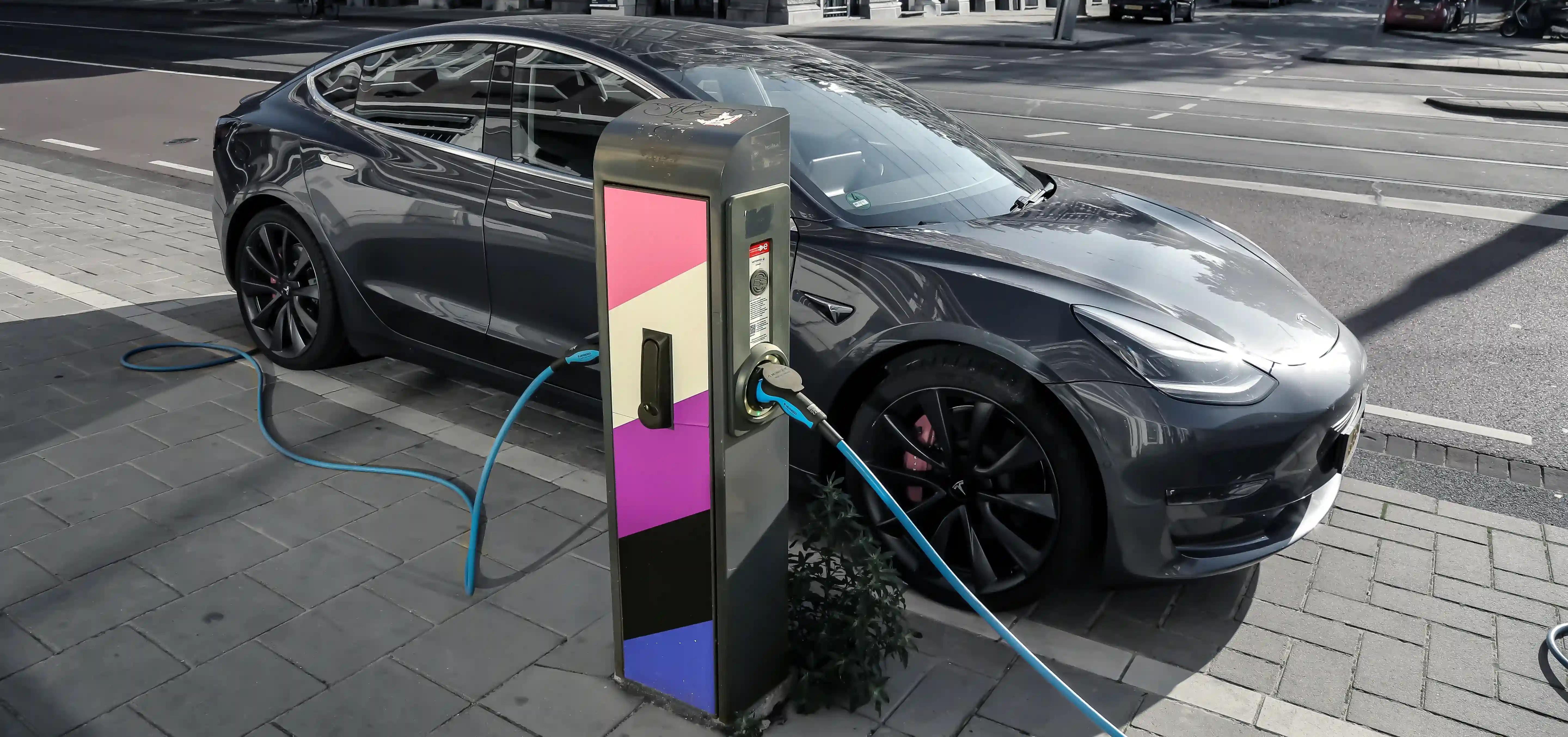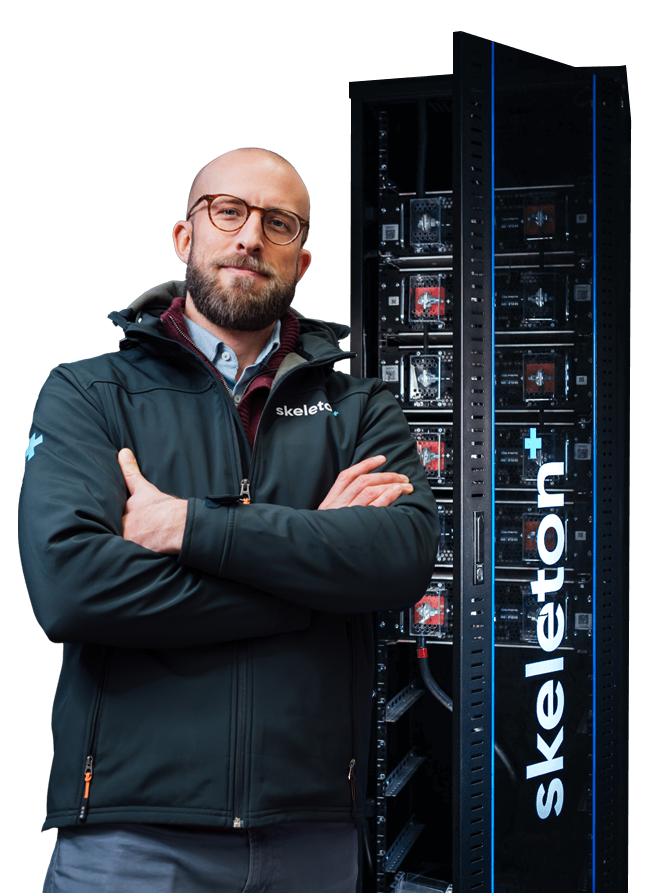
Powering Up: Energy Storage Solutions To Meet Growing EV Charging Demands

Amid an electrification surge in passenger car sales across Europe, the strain on power grids due to EV charging demands intensifies. As charging infrastructure grows, challenges arise with grid capacity and stability. Lead Application Engineer Ludovico Barro delves into these hurdles and introduces an innovative energy storage solution to buffer the grid and optimize EV charging.
In today's ever-evolving landscape, a remarkable global trend is undeniably taking shape—passenger cars are embarking on a resolute journey towards electrification. Yet, the extent of this transformation might raise an eyebrow or two: Electric Vehicle (EV) sales are surging in France, Germany, Italy, Spain, and UK with a total yearly growth rate of over 28%.
This growth understandably impacts the manufacturing ecosystem, as expected. Yet, another consequence is becoming increasingly apparent: the electric infrastructure is struggling to accommodate the growing number of power-hungry consumers who frequently plug in and unplug their vehicles for charging.
An electric vehicle that stops along the highway for recharging may encounter what are commonly referred to as "fast-chargers" that can have a rated power of up to 300kW per single connection point. It is estimated that there are roughly 500,000 charging stations dispersed across Europe and over 10% of these stations are currently functioning as fast-chargers. This number will increase dramatically due to new European laws requiring fast- charging stations every 60 km.
To offer a comparison with the electrical demands in urban settings, this solitary 300kW per charger consumes more power than 150 apartments together, each simultaneously operating stoves, laundry machines, and hairdryers. Envision a scenario with multiple such chargers situated at a station. The aggregate power consumption escalates rapidly, posing a considerable challenge to the electrical distribution grid.
Why is it a challenge? While the grid is indeed expansive and powerful, there are certain critical factors to consider within the realm of transmission system stability:
- Power Capacity Constraint: The grid functions within predetermined power capacity boundaries that dictate the quantity of electricity available for users. This capacity is inherently limited.
- Response Time Limitation: A constraint exists on the speed with which the EV charging station can attain its utmost power capacity when drawing electricity from the grid.
These constraints impact maximum power supply and delivery speed, especially when deploying multiple high-power chargers like 300kW fast-chargers. As their numbers rise, aggregated power demand surges, potentially overwhelming grid response and causing instability.
Given the aforementioned limitations, there will soon come a time when the integration of additional charging stations becomes impossible without significant grid upgrades. This issue will become even more prominent if greater amounts of renewable energy are integrated into the energy mix, a factor known to introduce additional complexities and stress on grid stability.
Energy storage technologies
Energy storage technology is a promising solution for buffering the impact of fast charging. Stationary Energy Storage Systems (ESS) can be strategically situated in proximity to charging stations to alleviate the strain on the grid by enabling…
- Slow Charge: ESS can gradually draw power from the grid during periods of lower demand.
- Energy Storage: The stored energy can be buffered to meet the demands of high-speed EV charging.
- Quick and Seamless Discharge: The stored energy can be swiftly discharged into EVs without causing any discernible fluctuations within the grid.
Let's consider a scenario where an EV parking area requires a 450kW charging station, while the available grid capacity is constrained to 100kW. As the grid's output exceeds the requisite power by more than 4-fold, an energy storage solution becomes inevitable. The question then arises: Which technology is optimal?
Across the energy storage landscape, technologies vary from high-power options like supercapacitors to high-energy solutions like lithium-ion batteries, meeting diverse demands for rapid bursts and extended storage. To offer EVs optimal uptime with seamless and swift recharging, lithium-ion battery technologies that rely on high energy density are an unsuitable choice due to their low C-rate (capability of charge and discharge quickly).
If the goal is to achieve a 5-minute charging cycle, the conventional approach involves using 7 to 8 racks of LFP battery modules. On the other hand, utilizing the SB technology requires only 2 to 3 racks. Based on preliminary calculations, this translates into a reduction in both footprint and investment, resulting in potential cost savings of up to 60%.
SuperBattery
Skeleton’s SuperBattery was designed to address challenging conditions, such as accommodating fast charging power requirements. It has a peak power rating of 100 times its capacity (100C) and a continuous discharge rate of 20 times its capacity (20C).
It also boasts more than 10 times more charge-discharge cycles compared to lithium-ion batteries, providing a much longer lifetime. As the demand for charging multiple vehicles and devices within a single day escalates, the SuperBattery's prolonged performance stability becomes pivotal. This is particularly crucial given the statistics indicating that while an electric vehicle typically undergoes one recharge per day on average, a charging station might be tasked with recharging tens of vehicles within the same timeframe.
How to incorporate energy storage?
Incorporating energy storage into the station involves integrating racks of SuperBattery modules, which are connected to the main power converter (the device that transforms the incoming AC power into the appropriate DC format required by electric vehicles. When a vehicle is connected for charging, the power converter initially draws power from the energy storage. As the stored energy is gradually depleted, the system seamlessly transitions to drawing power from the grid. This controlled approach prevents sudden spikes in grid demand, ensuring stable and efficient charging operations.
For these and various other applications, we are engineering energy storage modules that are compatible with conventional rack and cabinet systems. These modular units can be procured as turn-key solutions or incorporated by more seasoned customers into their preexisting charger designs.

Innovative technology forged from a decade of expertise
While the SuperBattery is the most recent addition to Skeleton’s product portfolio, material research, engineering and scale-up teams have been working together for years to launch this innovative hybrid of a battery and supercapacitor.
To achieve that, we have used the expertise accumulated over the 14 years that Skeleton has been involved in high-power energy storage. Consider, for instance, the cell manufacturing process employed, which mirrors that of our proven supercapacitor product line. We have also welcomed fresh expertise from the lithium-ion battery industry to expand the collective knowledge base.
Title photo by Rick Govic on Unsplash





